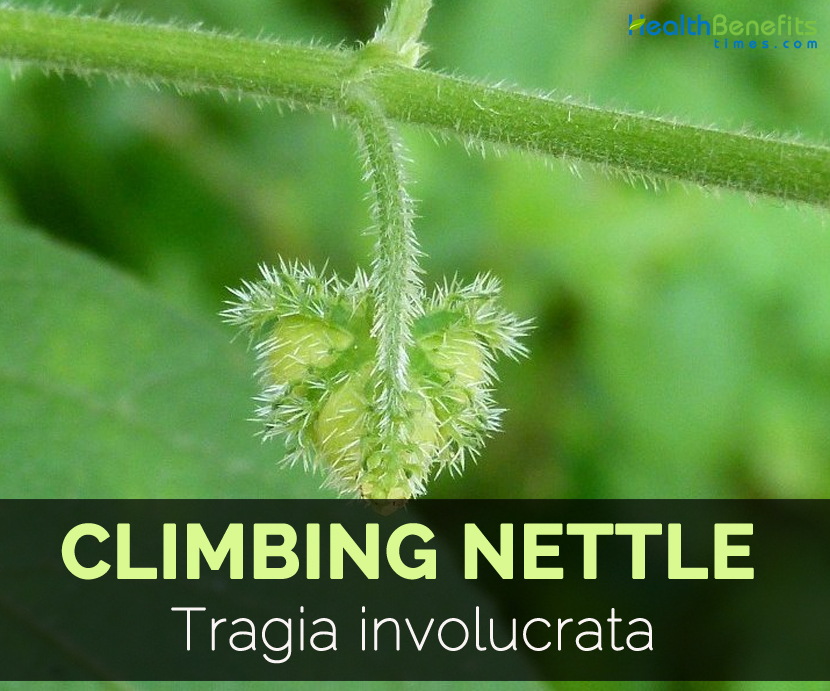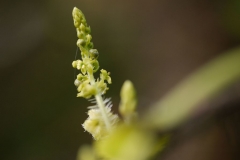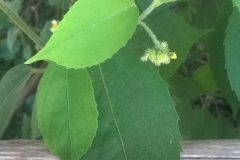Tragia involucrata roots extracted in methanol extract glared significant wound healing effect. The tribal or non-tribal people of Andhra Pradesh used Tragia involucrate to manage asthma. The roots are used to control skin diseases by Kani tribals in Kouthalai region of Tirunelveli hills and Tamil Nadu state of India. Roots possess larvicidal and oviposition deterrence activity. The present studies are conducted to figure out antibacterial potential of the plant in various gradient extracts.
Traditional uses
- The plant is used for treating skin eruption, cephelgia and diabetes.
- The tea prepared from leaves is helpful to treat intestinal worms.
- The plant is also helpful for treating malaria, fever and urinary tract infections.
- Apply the root paste to eliminate guinea worms and leprosy.
- Use the root decoction to provide relief from bronchitis and attendant fever.
- In Western Ghats of India, Malaiali tribes use the plant for treating wounds and skin infections.
- Leaves are used as a cure for headache and roots are used to treat fever.
- Root paste is used to eliminate worms.
- The mixture of paste with Ocimum sanctum leaf juice is used for treating veneral and skin diseases.
- Rub the fruit extracts on head for treating baldness.
- Leaves extract is used for treating rheumatic disorders and scurvy.
- It is helpful for treating stomach disorders.
- It is helpful in arthritis and allergic rhinitis.
- Apply the leaves juice on scalp to promote hair growth and reduce dandruff.
- It is effective for urination problems.
- Use the leaves extract on skin for rheumatic disorders.
Precautions
- When the skin comes in contact with plant, it causes itching.
- It is better to consult the health practitioner before treating health problems.
- With an experience of allergic reactions, consult the doctor immediately.
References:
https://www.itis.gov/servlet/SingleRpt/SingleRpt?search_topic=TSN&search_value=1027280#null
https://en.wikipedia.org/wiki/Tragia_involucrata
http://www.phytojournal.com/vol4Issue1/Issue_may_2015/4-1-35.1.pdf
https://pdfs.semanticscholar.org/bb2a/c3df8bc45721a4db5410ed00d230f67bfd2c.pdf
https://healthyliving.natureloc.com/kodithoova-kodithuva-choriyanam-climbing-nettle-medicinal-plant/
Comments
| Climbing Nettle Quick Facts | |
|---|---|
| Name: | Climbing Nettle |
| Shapes | 0.6 x 1 cm, 3-lobed, hispid |
| Name | Climbing Nettle |
|---|---|
| Common/English Name | Indian stinging nettle |
| Name in Other Languages | Malayalam: kodithoova, choriyanam; Assamese: Dumuni Chorat; Bengali: Bichuti (বিছুটি); English: climbing nettle, Indian stinging nettle, canchorie root-plant; Hindi: Pit Parni (पीत पर्णी), Barhanta (बढन्त); Kannada: Turike Balli (ತುರಿಕೆ ಬಳ್ಳಿ); Malayalam: Kodithumba, Choriyanam, Cherukodithuva, Coriyanam (ചൊറിയണം), Kodithoova; Marathi: Aagya (आग्या), Laghumedhshingi (लघुमेडशिंगी), Aag Paan (आग पान), Kallaavi (कळलावी); Nepali: Ut Kateri (उट कटेरी); Odia: Bichhuati (ବିଛୁଆତି), Kasalakku; Sanskrit: Duhsparsha (दुःस्पर्ष), Vrischikacchad (वृश्चिकाच्छद), Vrischikapatri (वृश्चिकापत्री), Vrischikali (वृश्चिकाली), Aagmavarta (आगमावर्ता), Kashagnih (कषाग्निः); Tamil: Kanchori (காஞ்சொறி), Senthatti (செந்தட்டி); Telugu: Telukondicettu (తేలుకొండిచెట్టు) |
| Plant Growth Habit | Perennial, evergreen climbing herb |
| Stem | Slender, elongate |
| Leaf | 6-10 x 3-5.5 cm, ovate or elliptic |
| Flower | White to yellowish |
| Fruit shape & size | 0.6 x 1 cm, 3-lobed, hispid |
| Seed | Globose, smooth |





